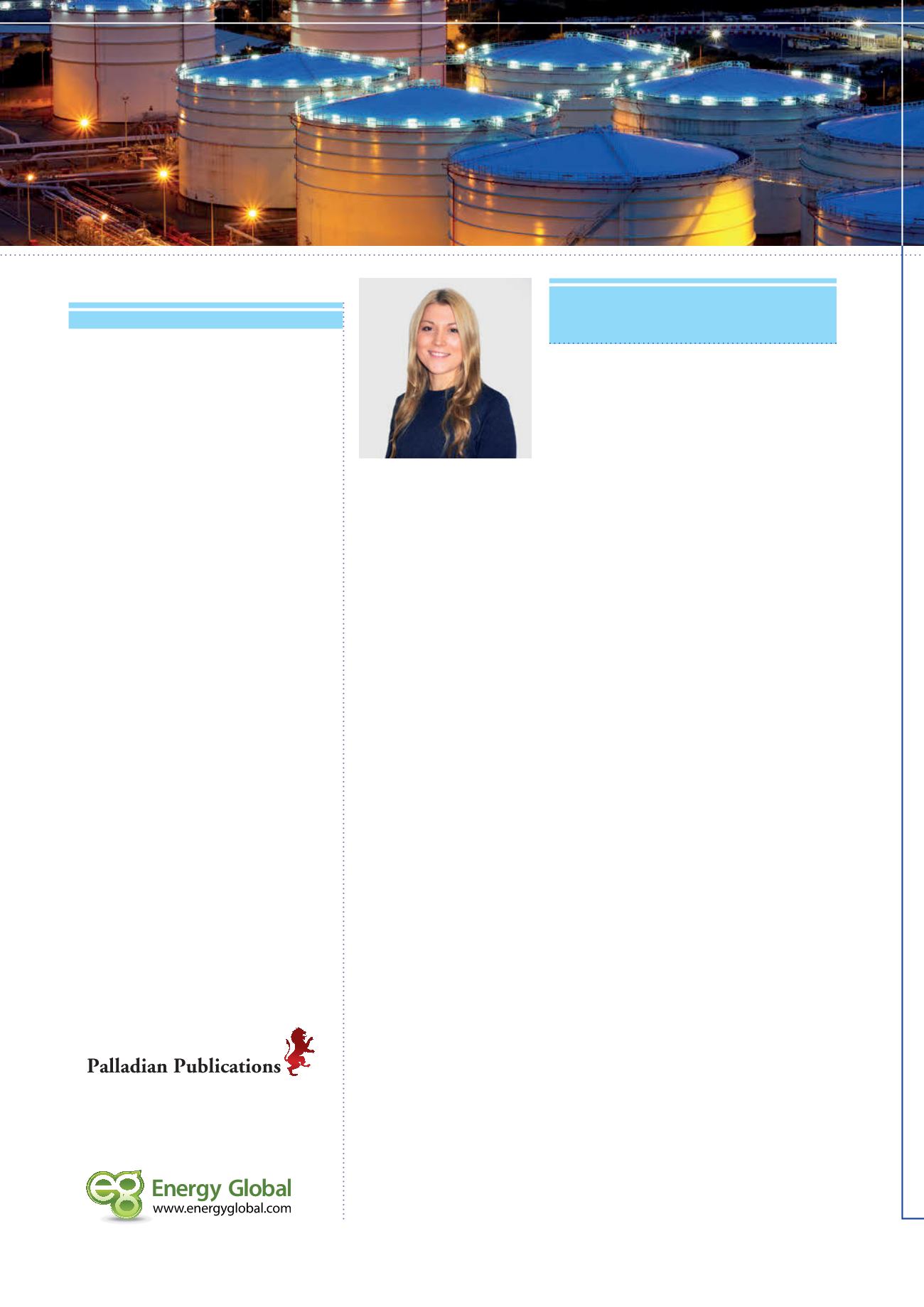
CONTACT INFO
MANAGING EDITOR
James Little
EDITOR
Rosalie Starling
EDITORIAL ASSISTANT
Francesca Brindle
ADVERTISEMENT DIRECTOR
Rod Hardy
ADVERTISEMENT MANAGER
Chris Atkin
ADVERTISEMENT EXECUTIVE
Will Powell
DIGITAL EDITORIAL ASSISTANT
Angharad Lock
PRODUCTION
Ben Munro
WEB MANAGER
Tom Fullerton
WEB EDITOR
Callum O’Reilly
SUBSCRIPTIONS
Laura White
OFFICE ADMINISTRATOR
Jo Repton
CONTRIBUTING EDITORS
Nancy Yamaguchi Gordon Cope
PUBLISHER
Nigel Hardy
SUBSCRIPTION RATES
Annual subscription £110 UK including postage
/£125/
e
175 overseas (postage airmail)
/US$200 USA/Canada (postage airmail).
Two year discounted rate £176 UK
including postage/£200/
e
280
overseas (postage airmail)
/US$320 USA/Canada (postage airmail).
SUBSCRIPTION CLAIMS
Claims for non receipt of issues must be made within 3 months of
publication of the issue or they will not be honoured without charge.
APPLICABLE ONLY TO USA & CANADA
Hydrocarbon Engineering (ISSN No: 1468-9340, USPS No: 020-998) is
published monthly by Palladian Publications Ltd GBR and distributed
in the USA by Asendia USA, 17B S Middlesex Ave, Monroe NJ 08831.
Periodicals postage paid New Brunswick, NJ and additional mailing
offices. POSTMASTER: send address changes to HYDROCARBON
ENGINEERING, 701C Ashland Ave, Folcroft PA 19032
15 South Street Farnham Surrey
GU97QU ENGLAND
Tel: +44 (0) 1252 718 999
Fax: +44 (0) 1252 718 992
COMMENT
ROSALIE STARLING
EDITOR
T
he oil and gas industry is much like
a puzzle, in the sense that you must
tactically fit together each portion of
the supply chain, from exploration to
production, transportation to processing, and
storage to distribution, to make up the whole
picture. Naturally, storage tanks and terminals
play an integral role in this puzzle, securely housing our industry’s notoriously
‘hard to handle’ products, such as natural gas, crude oil, petroleum and
chemicals, and acting as important safety and product quality control points.
While, at the best of times, the industry simply could not operate without
tanks and terminals, the currently oversupplied market has caused storage to
become more and more fundamental to the efficient operation of the supply
chain. International crude oil and petroleum product inventories have been
growing since mid-2014, when a large oversupply of oil developed and prices fell,
driving the product into storage. Demand for storage space has been increasing
ever since, as industry players expected, or hoped, that future prices would
improve over spot prices.
And supply, it seems, is not going to dwindle anytime soon. In fact, inventories
are continuing to build across the globe. US crude production has risen sharply
over the past couple of years, predominantly as a result of unconventional
shale oil in the Bakken, Eagle Ford and Permian plays. Although production is
projected to decrease from an average of 9.4 million bpd in 2015 to 8.7 million bpd
in 2016 and 8.5 million bpd in 2017, inventories remain high. On 29 January, the
US Energy Information Administration (EIA) reported total US commercial crude
oil inventories of 503 million bbls, marking the first time ever that inventories have
exceeded 500 million bbls. Distillate and motor gasoline inventories were also
reported to be above the five year and historical averages, respectively.
Over in the Middle East, in spite of the current market situation, OPEC, led by
Saudi Arabia, is continuing to pump oil in order to protect its market share – and
there is the potential for even more supply to enter the market. January witnessed
the lifting of nuclear-related sanctions on Iran, which had limited the country’s
ability to sell its oil on the global market since late 2011. This will, naturally, lead to
an increase in OPEC’s oil production and exports.
Douglas-Westwood (DW) recently noted that a ‘critical turning point’ is
approaching, when a barrel no longer finds spare capacity within existing onshore
storage. Floating storage, although expensive, has been deemed the most suitable
alternative if this situation should arise. However, the market would need to be in a
state of ‘super-contango’ in order to make this economical – meaning that the front
few crude spreads would need to be wide enough to cover the costs of storage
in tankers, and that prices may need to remain lower for longer than previously
expected. According to DW, widespread filling of offshore storage is likely before
significant depletion of supply takes place, and the market begins to rebalance.
Market oversupply is, indeed, an issue for the oil and gas industry; however,
the opportunities it presents for the storage sector are bountiful. How will
equipment suppliers, terminal operators, engineering companies and service
providers alike choose to capitalise on these opportunities? And what storage
solutions will best make use of the current market environment? Now that will be
a puzzle worth piecing together.


